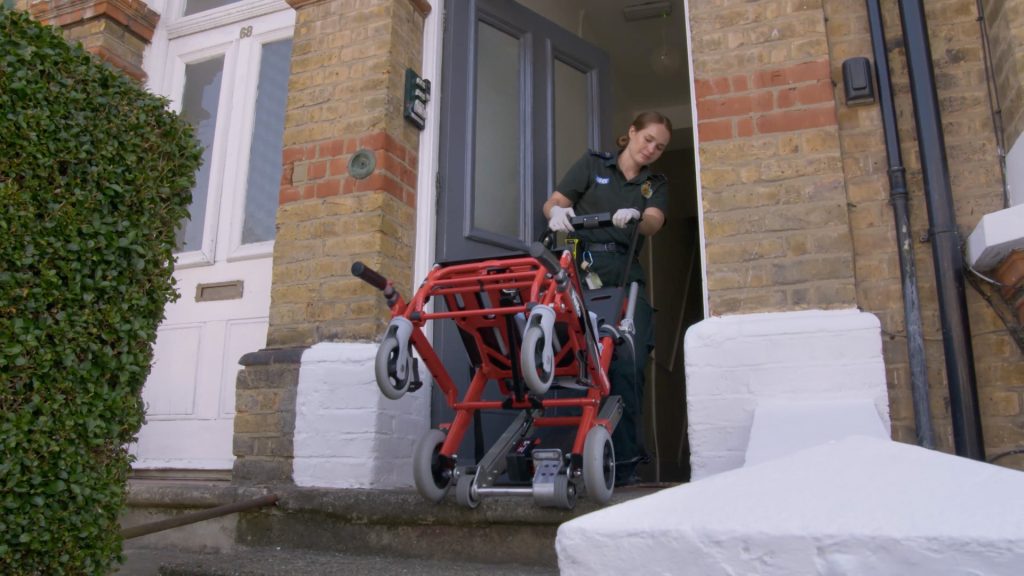Patients with painful genetic condition to get faster access to specialist care they need
London Ambulance Service and hospitals in south London have launched a new way to care for people experiencing a sickle cell crisis which means these patients can bypass busy emergency departments and be taken directly to specialist clinicians.

Sickle cell disease is a genetic health condition that is particularly common in people with an African or Caribbean family background and which affects the red blood cells. It is a serious and lifelong condition, although treatment can help manage many of the symptoms.
Symptoms include episodes of severe pain which can last several days – known as a sickle cell crisis – and people with the disease are at increased risk of other severe illnesses, such as a stroke and serious infections.
The London Ambulance Service’s action plan to improve care for patients with sickle cell disease, published in April, recommended that ambulance clinicians work with NHS hospitals across the capital to develop ways to convey patients with the disease to dedicated sickle cell units rather than an emergency department.
First set up at Hammersmith Hospital, LAS has now expanded the new care pathway to St George’s and Lewisham hospitals, which have expertise treating the condition beyond that found in a typical emergency department.
Dr Fenella Wrigley, Chief Medical Officer and Deputy Chief Executive at London Ambulance Service, said:
“We’ve listened to the needs of sickle cell patients and their families and fully recognise that they want ambulance crews and hospital clinicians advocating for them when they are going through some of most painful experiences of their lives.
“We have therefore taken the first steps in our action plan with our NHS partners to provide personalised care for those suffering a sickle cell crisis.
“Our dedicated teams and hospital partners have worked hard to implement these changes as quickly as possible so we can provide outstanding care to this group of patients with specific medical needs.”
The new pathways in south London, in partnership with St George’s Hospital and Lewisham Hospital, enables patients to receive more timely and expert care from specialist clinicians at these dedicated units which means better pain management, fewer hospital admissions and shorter duration of treatment.
Kate Slemeck, Managing Director for St George’s University Hospitals NHS Foundation Trust, said:
“A sickle cell crisis causes severe pain, which can be very distressing for patients and their loved ones. This new service will ensure they are treated by our specialist teams as soon as they arrive at hospital, improving their overall care and experience.
“Our dedicated centre treats 700 children and adults with sickle cell disease every year, and we’re proud to continue to build on the care we provide by offering this new service for those who need us in an emergency.”
Michael Barns, Lead Advanced Clinical Practitioner for the Hyper Acute Sickle Cell Unit at Lewisham Hospital, said:
“We are proud to work closely with London Ambulance Service in ensuring improved access to our Acute Sickle Cell Unit at the hospital.
“We have already begun to see the impact this pathway has on improving patient care, with an increasing number of referrals and faster patient access. We are working closely with London Ambulance Service to ensure continued improvement of this pathway as our operating hours increase over the next six months.”
Notes to editors
- London Ambulance Service attends approximately 6,000 sick cell crises a year across the capital – an average of 500 patients a month. Two thirds of the UK’s sickle cell sufferers live in London or receive their specialist care in London.
- To develop its action plan, London Ambulance Service sought the views of patients who had used the Service during a sickle cell crisis and commissioned two reports from Sickle Cell Society and Croydon Sickle Cell and Thalassaemia Support Group.
- At Lewisham Hospital, clinicians are administering pain relief for sickle cell disease in under 30 minutes on average. The unit is also seeing 250 patients a month due to increased operating hours, and working closer with London Ambulance Service to convey patients directly to the unit.
- Around 8,000 patients living with sickle cell disease in London have a Universal Care Plan in place which is shared digitally with healthcare professionals across the capital to help ensure patients are taken to the right specialist centres and receive the outcomes they desire.

Follow us on social media: